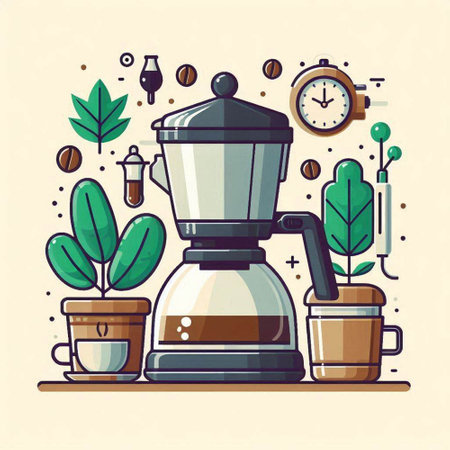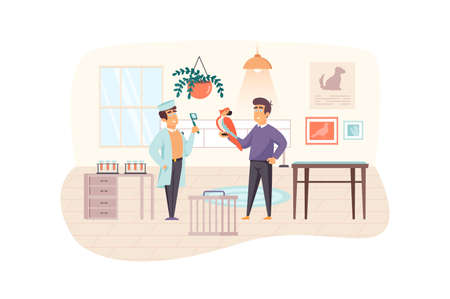Introduction to Japanese Tea Ceremony
The Japanese tea ceremony, also known as “chanoyu,” “sado,” or “chado,” is much more than simply drinking tea. It’s a ritual deeply woven into Japanese culture, reflecting centuries of tradition and philosophy. To understand how this ancient practice connects with modern coffee etiquette in the United States, let’s first explore what makes the Japanese tea ceremony unique.
History of the Japanese Tea Ceremony
The origins of the Japanese tea ceremony date back to the 9th century, when Buddhist monks first brought tea from China. Over time, it evolved from a simple act of drinking tea into a formalized ritual during the 15th and 16th centuries under the guidance of tea masters like Sen no Rikyu. The ceremony became an art form emphasizing harmony, respect, purity, and tranquility—the four core principles still followed today.
Timeline: Key Milestones in Japanese Tea Ceremony
| Period | Event |
|---|---|
| 9th Century | Buddhist monks bring tea from China to Japan |
| 12th-14th Centuries | Tea drinking spreads among samurai and aristocrats |
| 15th Century | Zen influence shapes the spiritual aspect of the ceremony |
| 16th Century | Sen no Rikyu establishes key philosophies and practices |
| Modern Day | The ceremony is practiced as a cultural art throughout Japan and worldwide |
The Philosophy Behind the Ritual
The heart of the Japanese tea ceremony is not just about enjoying matcha (powdered green tea) but about cultivating mindfulness and connection between host and guest. Every movement—pouring water, whisking tea, presenting sweets—is intentional and meaningful. This focus on presence and appreciation can be seen as a precursor to some of today’s coffee rituals in American cafés.
Cultural Significance: More Than Just Tea
The tea ceremony is a way to celebrate simplicity and beauty in everyday life. The utensils, the seasonal flowers, even the way sunlight enters the room—all are considered part of the experience. In Japan, taking part in a tea ceremony is often seen as an opportunity to slow down, show respect to others, and find peace amid daily chaos.
Japanese Tea Ceremony Values vs. Modern Coffee Etiquette (Preview)
| Japanese Tea Ceremony Value | Modern Coffee Culture Equivalent (U.S.) |
|---|---|
| Harmony & Respect (Wa & Kei) | Coffee shop “vibe” & respectful interactions with baristas/guests |
| Purity (Sei) | Focus on quality ingredients & clean brewing methods |
| Tranquility (Jaku) | Coffee shops as “third places” for relaxation and community gathering |
This deep-rooted tradition provides valuable context for understanding how American coffee etiquette has developed its own forms of ritual and meaning—something we’ll continue exploring in upcoming sections.
2. Understanding Modern American Coffee Culture
To appreciate the relationship between the Japanese tea ceremony and modern coffee etiquette, its important to first understand how Americans enjoy their coffee today. Coffee culture in the United States has evolved into something both social and personal, reflecting trends, lifestyles, and local customs. Whether you’re grabbing a to-go cup from a drive-thru or sitting down with friends at an independent café, there are certain unwritten rules and habits that define American coffee experiences.
The Daily Ritual of Coffee
Coffee drinking is a daily habit for many Americans. Some people see it as a necessary boost to start the morning, while others treat it as a comforting ritual throughout the day. Unlike the formal Japanese tea ceremony, American coffee routines tend to be informal but still carry their own etiquette.
Common Coffee Drinking Habits in the U.S.
| Setting | Typical Behavior | Etiquette Notes |
|---|---|---|
| Home | Brewed with drip machines or single-serve pods; often paired with breakfast | Refilling your own cup is normal; guests may be offered coffee automatically |
| Office | Coffee pots or communal machines; quick breaks during work hours | Refill the pot if you take the last cup; don’t leave a mess around machines |
| Café/Coffee Shop | Sit-in or takeout; alone or with company; working on laptops is common | Order at the counter; tip baristas; share tables politely if space is limited |
| Drive-Thru/On-the-Go | Coffee bought quickly for convenience; often consumed in cars | Move efficiently through the line; say “thank you” to staff at the window |
The Social Side of Coffee Etiquette
Coffee shops are popular spots for meeting friends, networking, or even informal interviews. It’s polite to buy something if you plan to stay awhile, especially if using free Wi-Fi. Keeping noise levels down and not monopolizing tables during busy hours are also part of good etiquette.
American Coffee Etiquette vs. Japanese Tea Ceremony: Key Differences and Similarities
| American Coffee Culture | Japanese Tea Ceremony | |
|---|---|---|
| Formality Level | Casual and relaxed | Highly formal and ritualistic |
| Main Purpose | Socialization, energy boost, relaxation, productivity aid | Meditation, mindfulness, hospitality, cultural appreciation |
| Serving Style | Self-service or barista-served; customization expected (milk, sugar, flavors) | Host prepares and serves tea in a specific order and manner; little customization by guests |
| Manners & Etiquette Focus | Consideration for others’ comfort (noise level, table sharing); tipping; cleaning up after yourself | Respect for tradition; precise movements; appreciation of aesthetics and hospitality |
Modern American coffee culture may not have the same level of ritual as the Japanese tea ceremony, but it shares an emphasis on community and respect—whether that’s through offering someone a fresh cup or simply being considerate of fellow café patrons.

3. Shared Values: Ritual, Hospitality, and Social Connection
Both the Japanese tea ceremony and modern coffee etiquette in America might seem worlds apart at first glance, but they actually share some important cultural values. When you look closely, you’ll notice that mindfulness, hospitality, and a sense of community play a key role in both traditions. Let’s take a closer look at how these values show up in everyday life.
Mindfulness in Every Sip
One of the core ideas behind the Japanese tea ceremony is being present in the moment. Every movement, from pouring water to serving tea, is done with intention. While grabbing coffee in the U.S. can sometimes be rushed, there’s also a growing trend of “slow coffee”—think pour-over brews or sitting down with friends at a cozy café. In both cultures, there are moments where people pause and truly enjoy their drink, appreciating the flavors and the company.
Hospitality: Making Guests Feel Welcome
Hospitality is another value both traditions hold dear. In Japan, hosts carefully prepare every aspect of the tea ceremony to make guests feel honored and comfortable. Similarly, American coffee shops often pride themselves on friendly service and creating inviting spaces. Whether it’s offering a homemade sweet treat during tea or customizing a latte just right for someone, both cultures know how to make people feel welcome.
Building Community Through Shared Experiences
Coffee shops in America have become important gathering spots—places where friends catch up, students study together, and locals meet for business chats. The Japanese tea ceremony also brings people together, often marking special occasions or simply providing a space for meaningful conversation. Both rituals help build connections between individuals and within communities.
Comparing Key Cultural Values
| Value | Japanese Tea Ceremony | Modern Coffee Etiquette (U.S.) |
|---|---|---|
| Mindfulness | Careful attention to each step; focus on being present | Slow brewing methods; savoring the moment with friends or alone |
| Hospitality | Thoughtful preparation for guests; attention to comfort | Friendly baristas; personalized drinks; welcoming atmosphere |
| Community | Ceremonies mark special events; strengthen relationships | Coffee shops as social hubs; group gatherings; local events |
The Takeaway: More Alike Than You’d Think
While the setting and drinks may differ, the underlying values of ritual, hospitality, and social connection bridge the gap between Japanese tea ceremonies and American coffee culture. These shared traditions remind us that simple acts—like sharing a cup of tea or coffee—can create meaningful experiences and bring people together.
4. Differences in Formality and Everyday Practice
When comparing the Japanese tea ceremony with modern American coffee habits, one of the most striking differences is the level of formality. The Japanese tea ceremony, or “chanoyu,” is deeply rooted in tradition and ritual. Every movement, from how you enter the room to the way you hold the cup, is intentional and practiced. In contrast, modern coffee etiquette in the United States tends to be much more casual and flexible.
Formality vs. Casualness
The Japanese tea ceremony is usually reserved for special occasions. There are set rules for attire, behavior, and even conversation topics. On the other hand, grabbing a cup of coffee in the U.S. is often an everyday event—something you do on your way to work or while catching up with friends. Coffee shops are designed for comfort and informality, making them accessible to almost everyone.
Key Differences at a Glance
| Japanese Tea Ceremony | Modern American Coffee Etiquette | |
|---|---|---|
| Level of Ritual | Highly formalized; specific steps must be followed | Relaxed; few rules beyond basic manners |
| Accessibility | Requires knowledge and sometimes invitation | Open to everyone; walk-ins welcome anytime |
| Setting | Dedicated tea rooms with traditional décor | Coffee shops, offices, homes—anywhere is fine |
| Main Purpose | Cultural appreciation and mindfulness | Socializing, convenience, or quick energy boost |
| Frequency | Occasional/special events | Daily routine for many people |
The Everyday Impact on Culture
This difference in formality also shapes how each culture approaches hospitality and gathering. In Japan, inviting someone to a tea ceremony is a thoughtful gesture that requires preparation and respect. In America, inviting someone for coffee is as simple as sending a text message. These habits reflect broader cultural attitudes toward time, social interaction, and community.
5. Influence and Fusion: Where Traditions Meet
Today, the world of coffee in America is more than just a quick caffeine fix—it’s becoming an experience, much like the traditional Japanese tea ceremony. Let’s explore how the aesthetics and rituals from Japanese tea ceremonies have blended with modern American coffee culture, creating something unique.
Bringing Mindfulness to Coffee
The Japanese tea ceremony is all about being present in the moment. Every movement, from pouring water to serving tea, has purpose and intention. We’re now seeing this mindfulness pop up in coffee shops across the US. Baristas take their time preparing pour-over or siphon coffees, focusing on technique and quality instead of speed. Customers are encouraged to slow down and savor each sip, rather than just grabbing coffee on the go.
Table: Ritual Elements Comparison
| Japanese Tea Ceremony | Modern American Coffee Culture |
|---|---|
| Precise preparation steps | Coffee brewing methods (pour-over, siphon) |
| Emphasis on presentation | Aesthetic latte art, curated cupware |
| Mindful atmosphere | Cozy, quiet cafés; background music for ambiance |
| Community connection | Coffee tastings, barista-led events |
Aesthetic Inspirations in Coffee Shops
If you’ve visited specialty coffee shops in cities like New York or Los Angeles, you might notice elements inspired by Japanese design—minimalist interiors, natural materials like wood and stone, and carefully arranged spaces that invite relaxation. These design choices help create a calming environment reminiscent of a tea room.
Focus on Ritual and Experience
Both traditions place value on the ritual itself. For example, during a Japanese tea ceremony, participants focus on every detail from the arrangement of utensils to the way tea is served. Similarly, many American baristas now involve customers in the process—explaining origins of beans, grind size, and brewing techniques—making the act of drinking coffee an interactive event rather than a solo habit.
The Fusion Continues to Grow
This blending isn’t just about copying styles; it’s about creating new experiences that honor both traditions. As more Americans embrace specialty coffee, they’re also embracing values like hospitality, mindfulness, and appreciation for craftsmanship—all core aspects of the Japanese tea ceremony.
6. Conclusion: Lessons for Modern Etiquette
The Japanese tea ceremony has long been a symbol of mindfulness, respect, and hospitality. While coffee culture in the U.S. tends to be fast-paced and casual, there are valuable lessons we can learn from traditional Japanese tea practices. By blending these traditions with American values, we can create more intentional and meaningful coffee experiences.
What Can We Learn from the Tea Ceremony?
| Japanese Tea Ceremony | Modern U.S. Coffee Etiquette | Lesson for Coffee Lovers |
|---|---|---|
| Emphasis on presence and mindfulness | Coffee often consumed on-the-go | Take time to enjoy your coffee moments without distractions |
| Respect shown to guests and hosts | Casual interactions at cafes | Show appreciation for baristas and fellow customers |
| Attention to ritual and detail | Simplified routines, sometimes rushed | Add a small ritual to your daily coffee—like savoring the aroma or sharing with a friend |
| Connection to nature and seasonality | Coffee as a year-round staple | Try seasonal flavors or enjoy coffee outdoors when possible |
| Ceremony fosters a sense of community | Solo coffee runs are common | Invite someone for coffee or join community events at local cafes |
Bringing Mindfulness to Your Coffee Routine
You don’t need to perform a full tea ceremony to make your coffee experience more mindful. Even simple changes—like sitting down for five minutes instead of rushing out the door, or expressing thanks when you get your coffee—can turn an everyday habit into something special. In this way, drawing inspiration from the Japanese tea tradition can help build stronger connections and bring a bit more calm into our busy lives.


